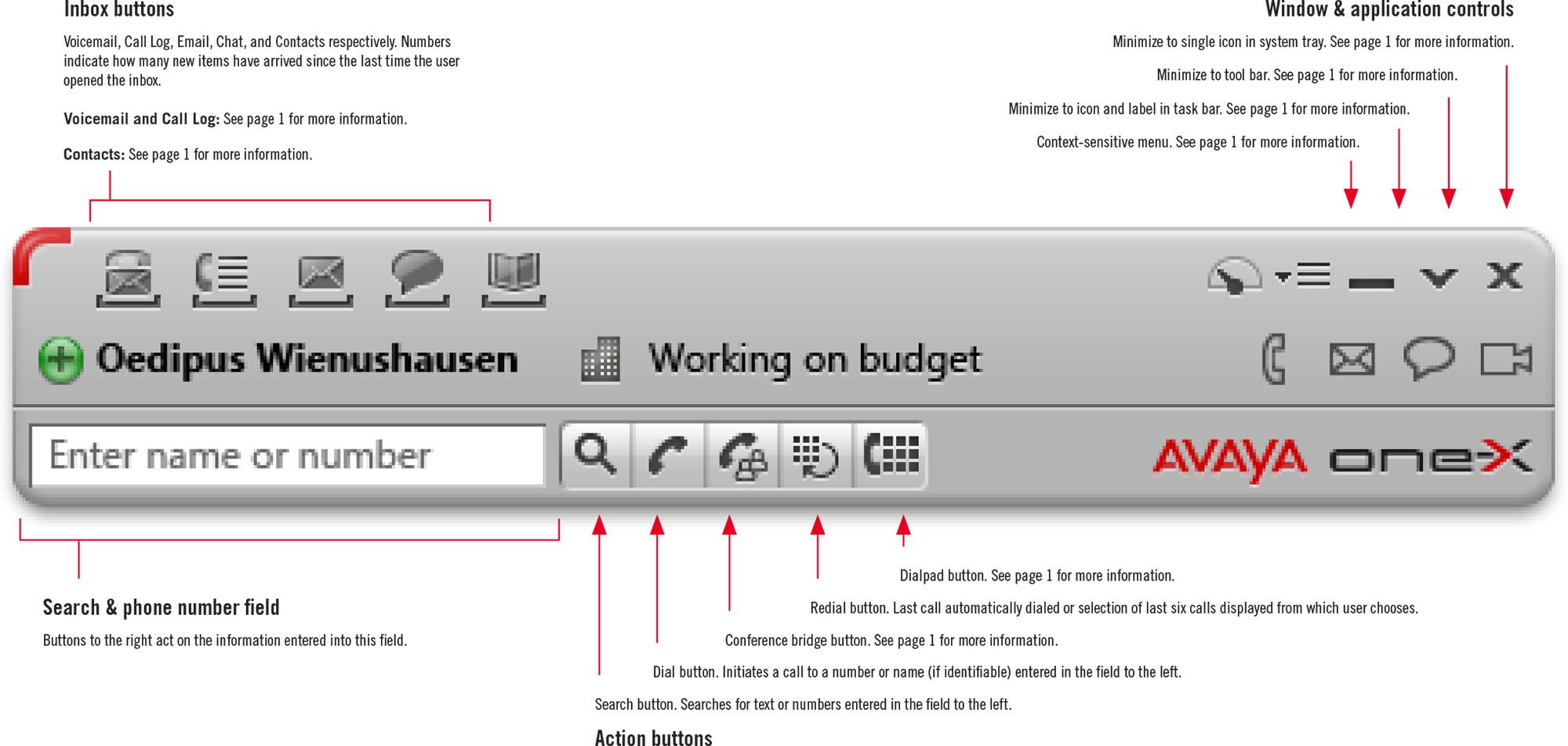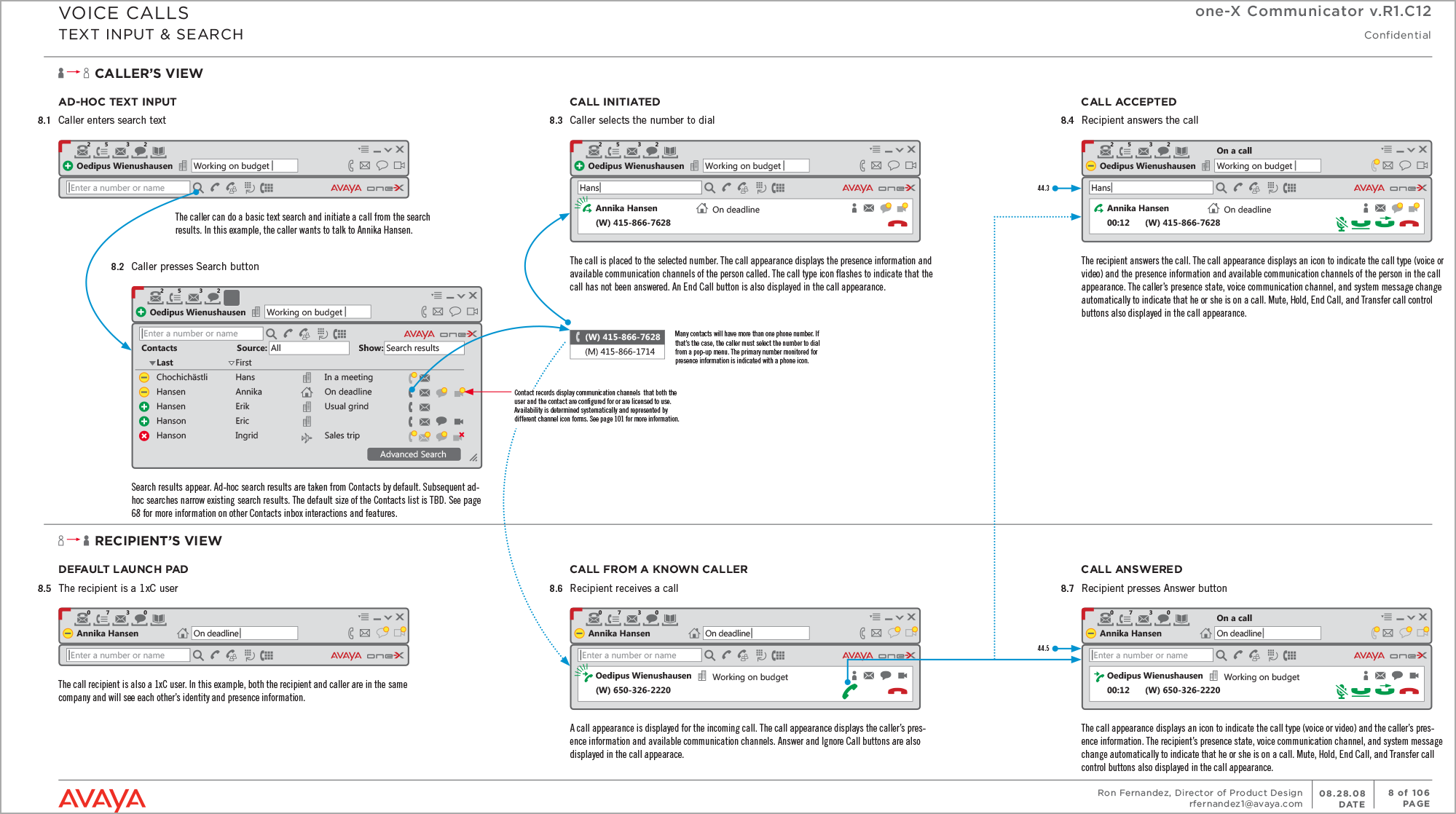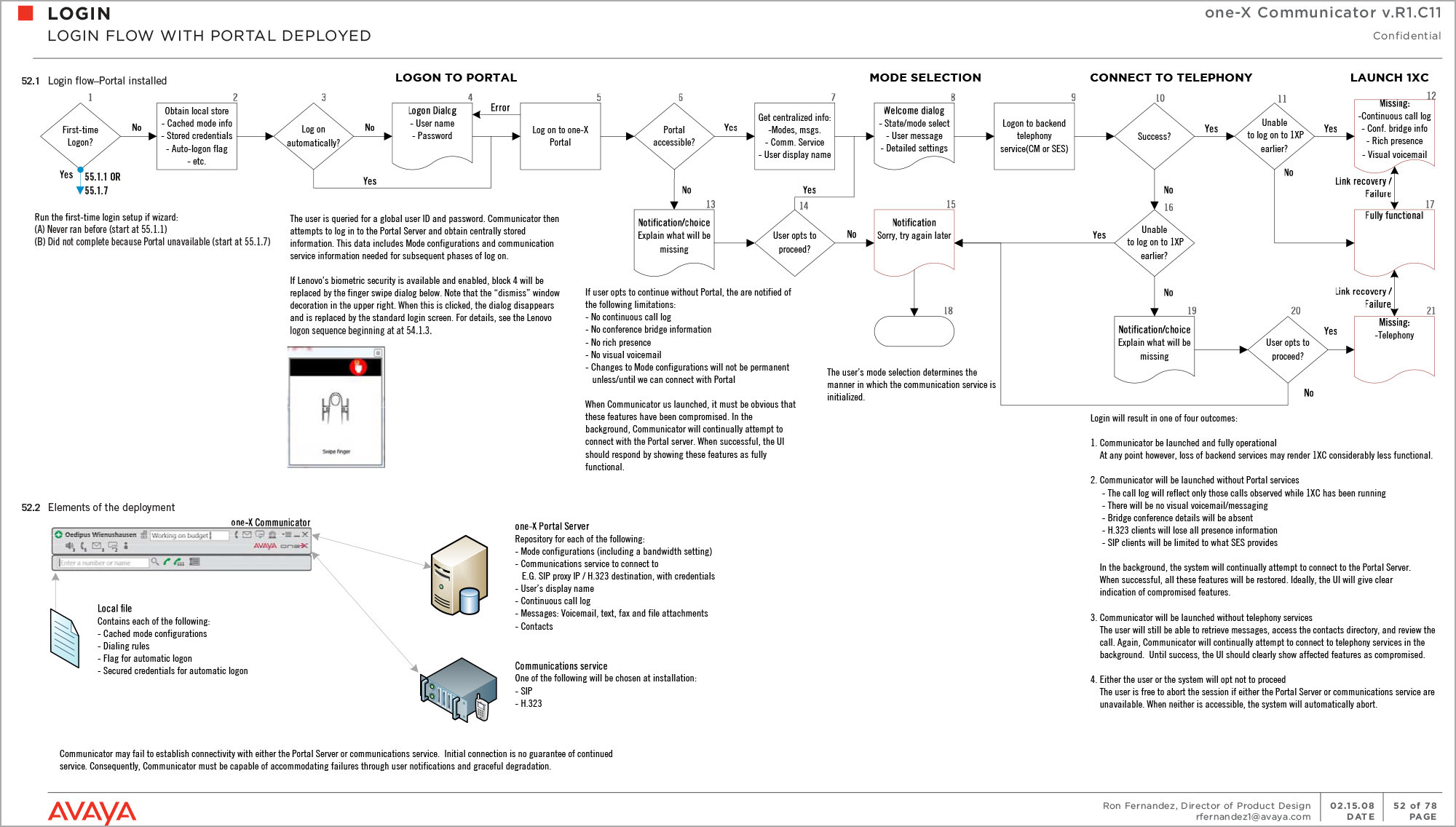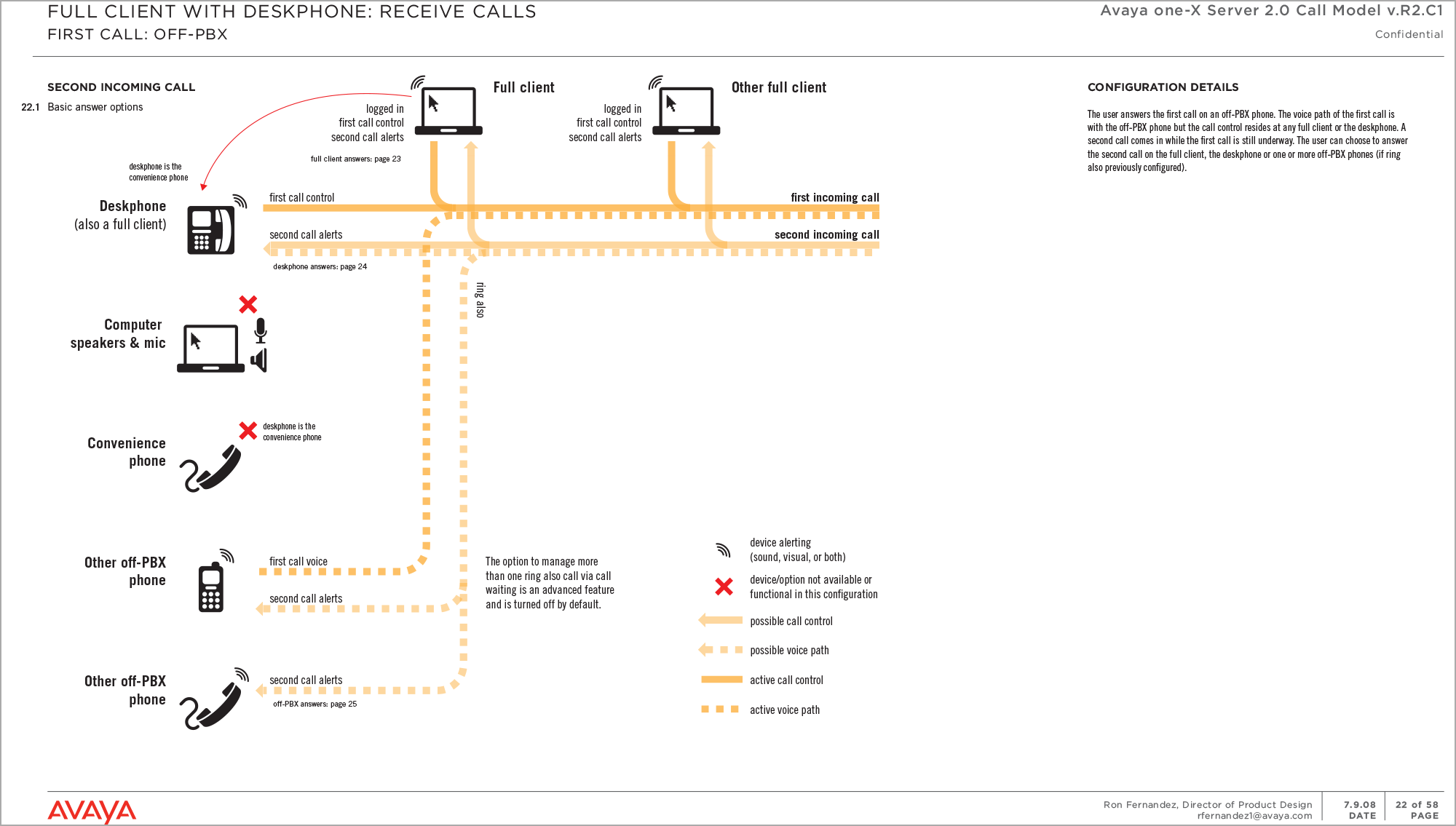Director of Product Design
5/2005 - 6/2010
Avaya, a maker of enterprise unified communications services, acquired Traverse Networks—where I had designed a core set of mobile telephony apps—in 2006 for $15 million.
Designed and shipped mobile, desktop, and web clients for unified communications suite integrating voice, voicemail, contacts, video, and other services.
Created the systems architecture ▸ that unified non-integrated features within a common login process and UX after no action from development or product management.
Documented multi-client call flow scenarios ▸ (56 in total) and associated functional requirements.
one-X Communicator platform
Avaya’s unified communications offering brought together voice, text, email, and early video services. This required the design and development of a suite of Windows and mobile applications.
Unified Windows client
Upon joining Avaya, I was asked to finish design of the one-X Communicator, a PC-based, all-in-one messaging client for voice and video calls, messaging, and e-mail. Avaya had hired a design firm in Germany to do the UX but all they had delivered was a complex look-and-feel. I brought the effort in-house, defined requirements for call management between multiple clients, identified the multiple Avaya back-end services that had to coordinate for account creation, and created the final UX.
One-X Mobile app suite
Avaya bought Traverse Networks for $15 million to acquire the BlackBerry, Palm, and Windows mobile apps I had designed. Traverse had developed backend services and mobile apps to provide visual voicemail features (U.S. patent US8396456B2) for Cisco, Avaya, and Shoretel enterprise phone systems. The iPhone brought visual voicemail features to the consumer market three years later.
United communication patents
Visual voicemail management
US8396456B2
Conference material bot method and apparatus
US8290136B2
Specified Constraints For Message Responses
US20100262921A1










